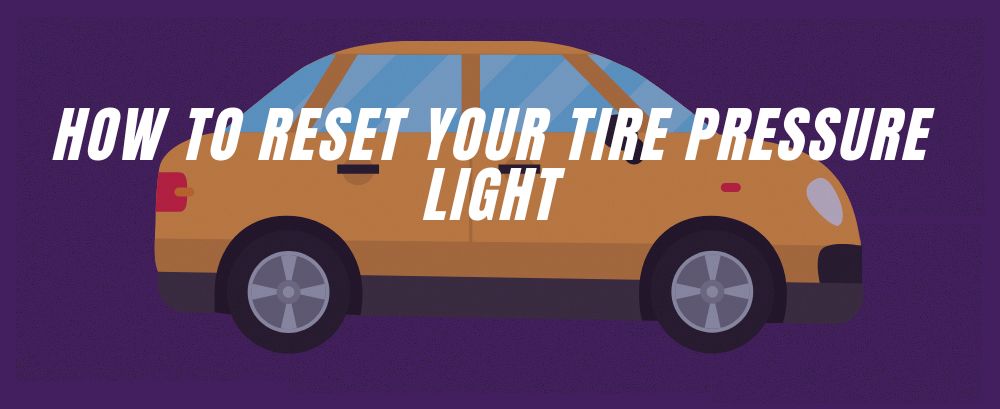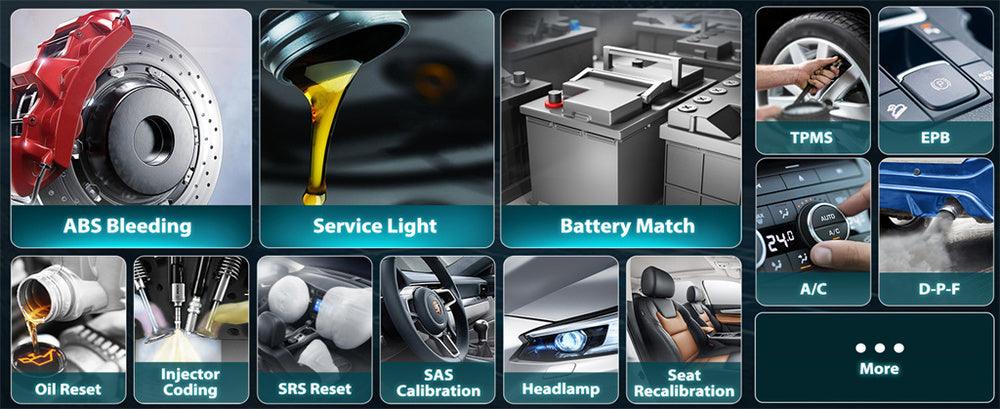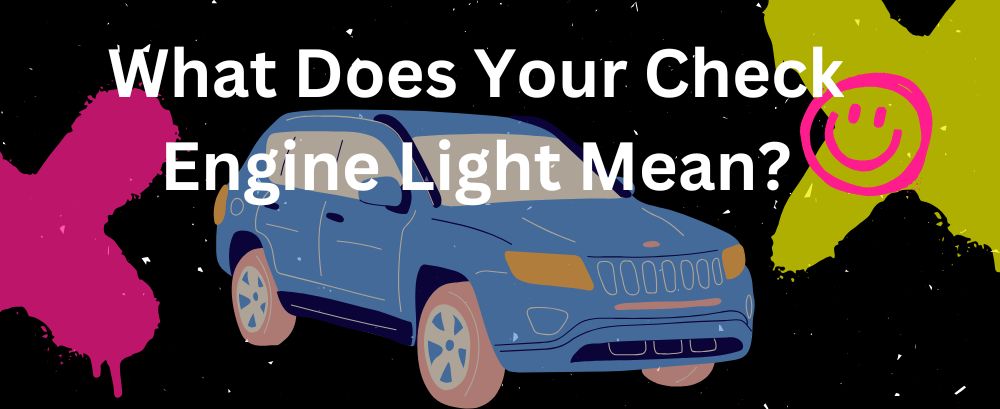Maintaining the correct tire pressure not only enhances safety and traction but also improves fuel efficiency and extends tire life.
But what if the TPMS light stays on even after you’ve adjusted your tire pressure? In many cases, you may need to reset the TPMS to clear the warning.
Here’s a comprehensive guide on what to do when your tire pressure light won’t turn off, and what it could mean if the TPMS light is flashing.
What To Do When Your TPMS Light Comes On

When the TPMS light illuminates on your dashboard, it typically signals that the pressure in one or more tires is outside the recommended range. Driving with under-inflated or over-inflated tires can lead to:
Reduced safety and compromised handling, especially in adverse weather conditions.
Lower fuel efficiency, as improperly inflated tires increase rolling resistance.
Accelerated tire wear, which can shorten your tires’ lifespan.
If your TPMS light comes on, the first step is to check each tire's pressure (including the spare if it has a sensor) and adjust it according to the recommended pressure found in your vehicle’s manual or on the sticker inside the driver’s door frame.
If your tire pressures are correct but the light remains on, try these steps to reset the TPMS.
Step-by-Step Guide to Resetting Your TPMS Light
Here are several methods to try if your TPMS light won’t turn off after confirming all tires are properly inflated.
Method 1: Drive Your Vehicle at a Moderate Speed
Often, simply driving your vehicle can reset the TPMS sensors. Here’s how:
Drive at around 50 mph for approximately 10 minutes, preferably on a safe, open road where you can maintain a steady speed.
After your drive, turn off the car and restart it to check if the TPMS light has turned off.
This method works because many TPMS systems recalibrate themselves after the vehicle has been driven at a moderate speed. If this doesn’t work, move on to the next method.
Method 2: Use the TPMS Reset Button
Some vehicles have a TPMS reset button. This button is often located under the steering wheel, in the glove compartment, or near the center console. To reset the TPMS using this button, follow these steps:
Turn the key to the “On” position without starting the engine.
Hold down the TPMS reset button until the TPMS light begins to flash, which usually takes a few seconds.
Release the button and start the engine. The TPMS light should turn off if the tire pressures are correct.
If the TPMS light stays on, you may need to repeat the process. This method works well for many vehicles equipped with a reset button, as it allows you to manually prompt the system to recalibrate.
Method 3: Inflate and Deflate Your Tires in Sequence
If the first two methods don’t work, try this approach, which involves slightly over-inflating and then deflating each tire. This can sometimes reset stubborn TPMS sensors.
Inflate each tire to 3 PSI above the recommended level. This slight overinflation can help the sensors recalibrate.
Deflate each tire completely, including the spare tire if it has a TPMS sensor. Make sure all tires are fully deflated.
Reinflate each tire to the correct pressure. Be precise, as proper inflation is crucial for safe driving.
Start your vehicle and drive for a few minutes to see if the TPMS light resets.
This method helps recalibrate the sensors, especially if they were triggered by an imbalance.
Method 4: Check the Spare Tire’s Pressure
Some vehicles have a TPMS sensor on the spare tire. If the spare tire’s pressure is low, it can trigger the TPMS light, even if your main tires are properly inflated. Here’s what to do:
Check the pressure of your spare tire. The recommended PSI level is usually on the tire itself or in your vehicle’s manual.
Inflate the spare tire to the recommended pressure if it’s low.
Start the vehicle and drive for a few minutes to allow the system to recognize the correct pressure.
If the spare tire was the issue, the TPMS light should turn off after a short drive.
Method 5: Use an Automotive Scan Tool
If none of the previous methods work, an automotive scan tool can be an effective way to reset the TPMS light. These tools are used by mechanics and some vehicle owners to diagnose and clear TPMS-related issues directly. Here’s how to use it:
Connect the automotive scan tool to your vehicle’s OBD-II port, which is usually located under the dashboard.
Turn the ignition to the “On” position without starting the engine.
Use the scan tool to navigate to the TPMS reset or “Relearn” option, which can clear any TPMS warnings.
Once the reset is complete, start the vehicle and check if the TPMS light has turned off.
An automotive scan tool is particularly useful if the TPMS light is on due to a sensor error that needs diagnostic confirmation. It provides a more precise and reliable way to reset the system, especially for vehicles with persistent TPMS issues.
What To Do If the TPMS Light Is Flashing
A flashing TPMS light is different from a steady one. If the TPMS light is flashing, it often indicates a malfunction in one of the sensors rather than just a low-pressure warning. Common causes include:
- Low sensor battery: TPMS sensors have built-in batteries that typically last 5–10 years. When these batteries are low, the sensors may malfunction.
- Sensor malfunction: The sensor may need to be replaced if it’s no longer working properly.
If you’ve tried all the reset methods and the TPMS light continues to flash, it’s best to consult a professional. A flashing TPMS light often indicates that a sensor needs to be replaced, which a technician can handle with the appropriate tools.
Why It’s Important to Address TPMS Light Issues
Ignoring a TPMS warning light can lead to unsafe driving conditions. Here are some reasons why it’s essential to keep your TPMS system working correctly:
- Safety: Proper tire pressure ensures better handling and control, reducing the risk of tire-related incidents, especially at high speeds or in slippery conditions.
- Fuel Efficiency: Under-inflated tires create more rolling resistance, reducing your vehicle’s fuel efficiency and costing you more at the pump.
- Tire Longevity: Maintaining the correct pressure helps prevent uneven tire wear, extending the lifespan of your tires and saving you money in the long run.
Regularly checking your tire pressure and keeping an eye on the TPMS light will help ensure that you’re driving safely and efficiently.
By following these steps, including using an automotive scan tool if necessary, you can take control of your TPMS system and ensure that your tires are always at the optimal pressure. Proper tire maintenance not only extends the life of your tires but also enhances your safety on the road.
If your TPMS light persists despite trying these methods, consider consulting a professional to ensure everything is functioning correctly.

Conclusion
The Tire Pressure Monitoring System (TPMS) in modern vehicles helps keep drivers safe by alerting them when tire pressure is outside the optimal range. If the TPMS light stays on after adjusting tire pressure, a reset may be necessary.
This guide covers multiple methods for resetting the TPMS light, from taking a short drive to using the TPMS reset button, adjusting tire pressure manually, or using an automotive scan tool for more precise diagnostics.
Addressing TPMS warnings is essential for safety, fuel efficiency, and tire longevity. If the light flashes, it may indicate a faulty sensor that requires professional attention. Proper tire maintenance ensures safer, more efficient driving, extending the life of your tires.
FAQs
Where is the TPMS reset position?
The TPMS (Tire Pressure Monitoring System) reset button is usually located beneath the steering wheel, on the dashboard, or within the glove compartment. Check your vehicle’s manual for the exact location.
Does tire pressure light reset on its own?
In some cases, the tire pressure light resets on its own after the tires are inflated to the correct pressure. However, if it doesn’t, you may need to manually reset it using the TPMS reset button.
Where is my TPMS located?
The TPMS sensors are located inside each tire, typically attached to the valve stem or mounted within the wheel. The system monitors tire pressure and sends data to your vehicle’s dashboard.




Leave a comment
This site is protected by hCaptcha and the hCaptcha Privacy Policy and Terms of Service apply.